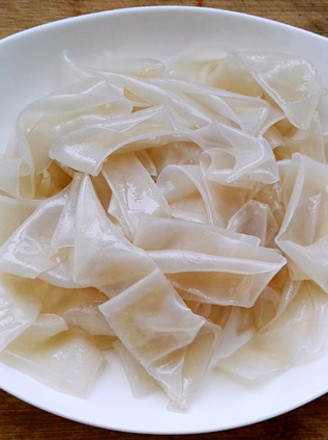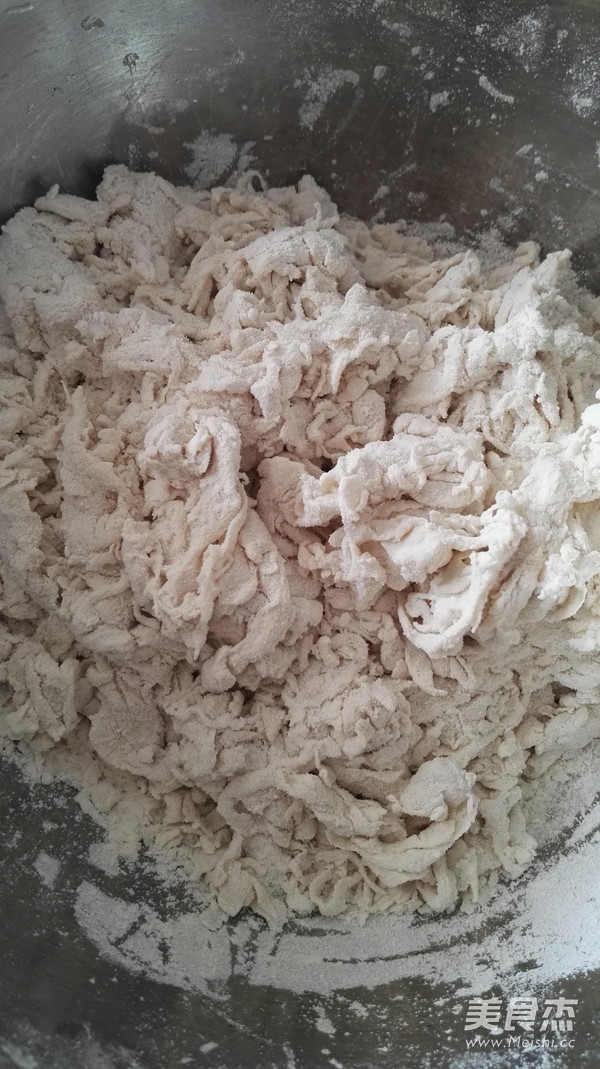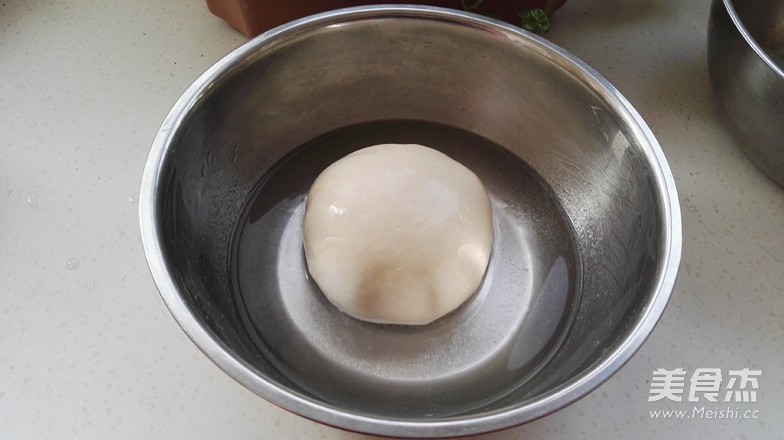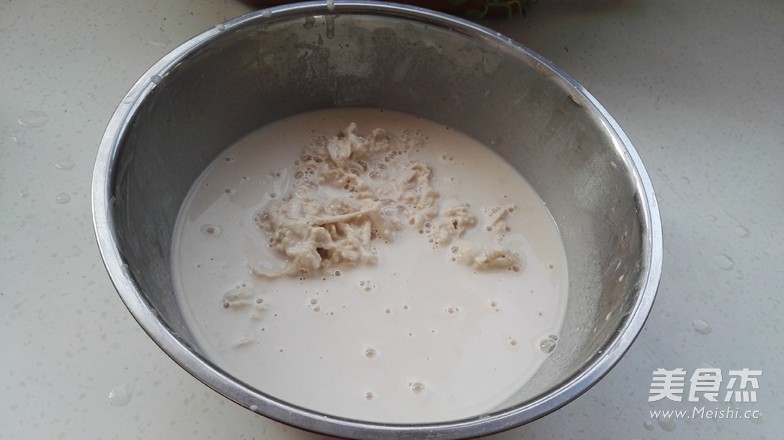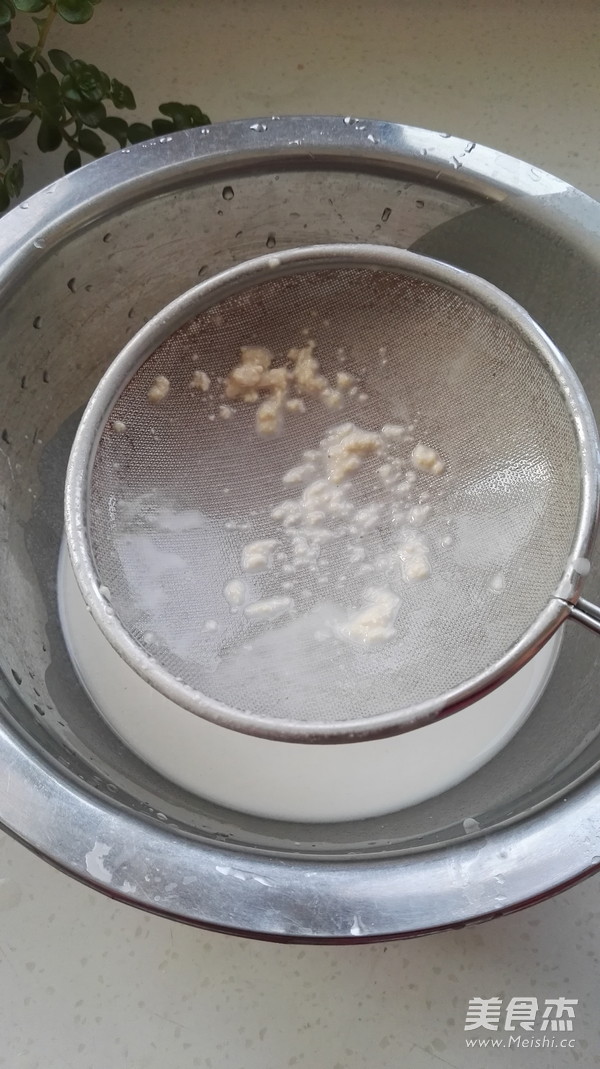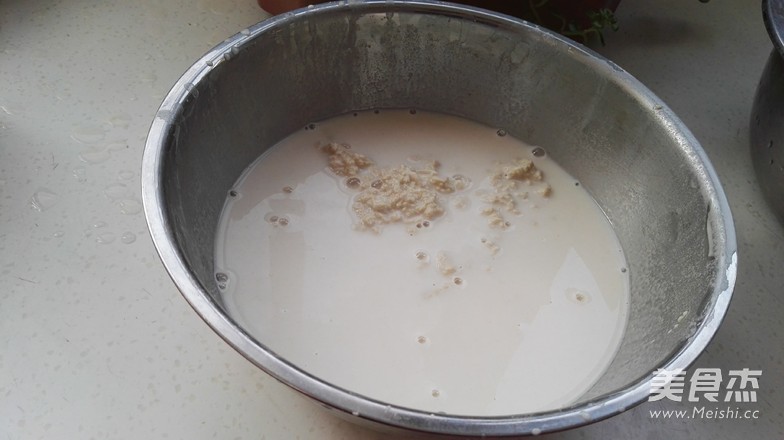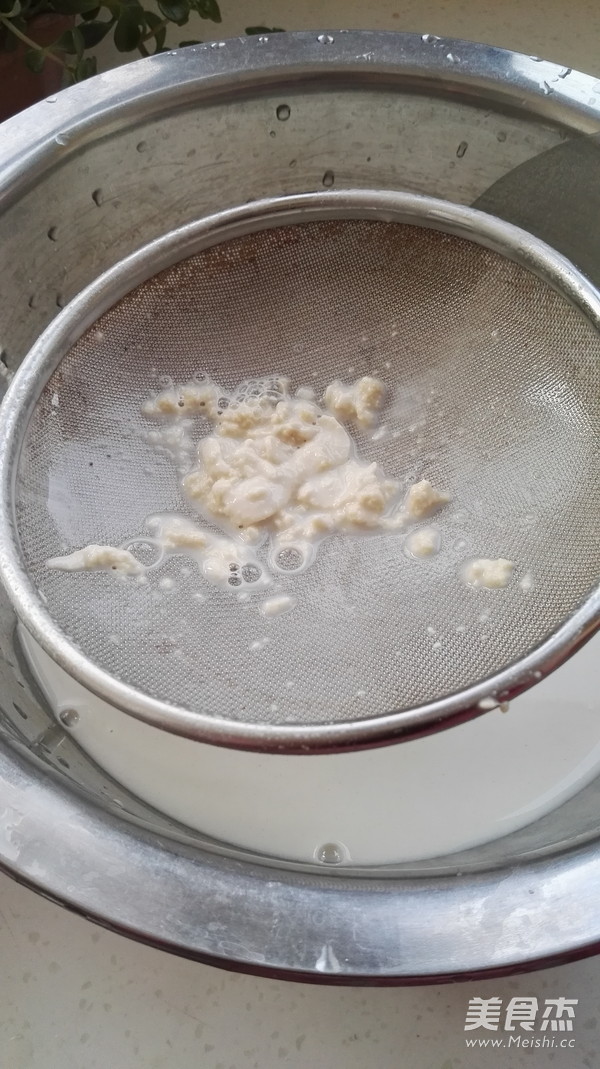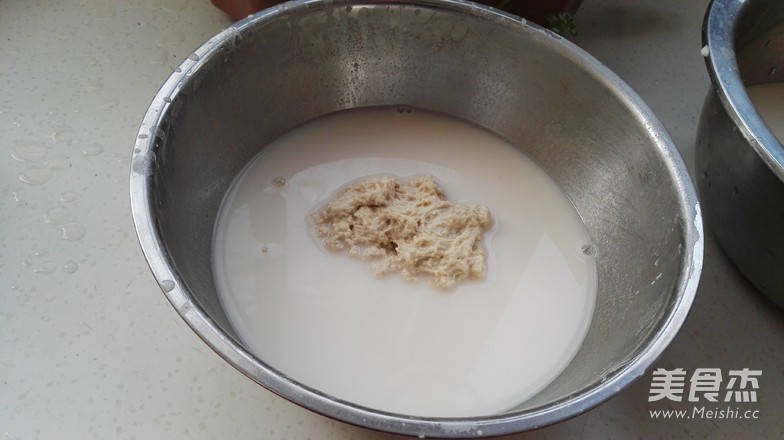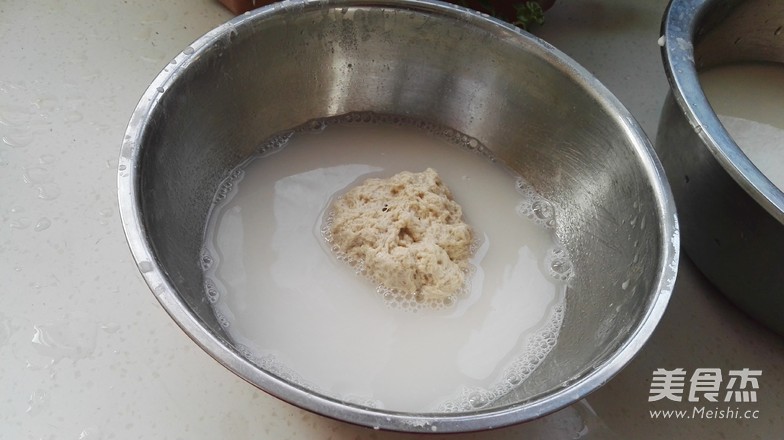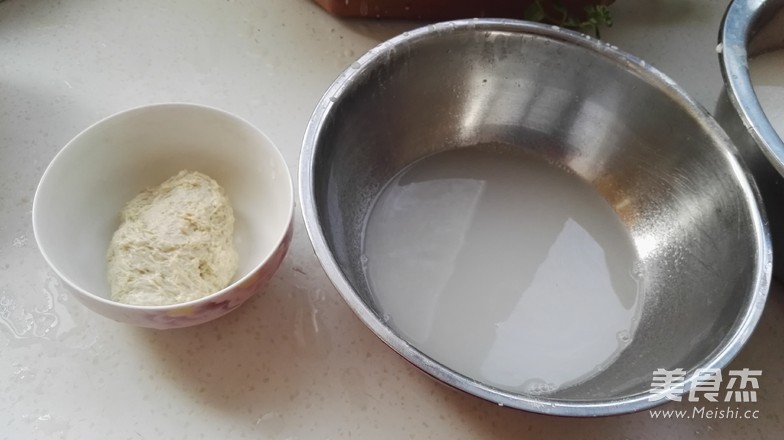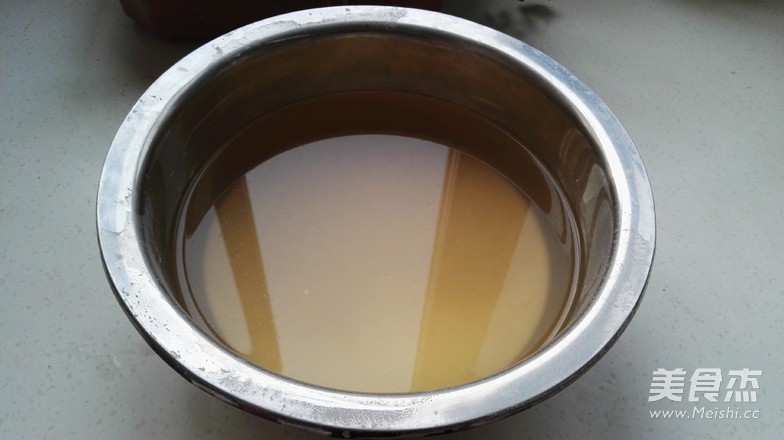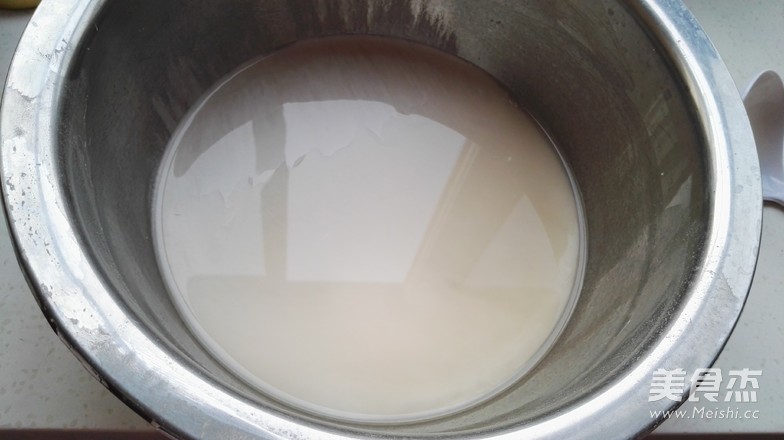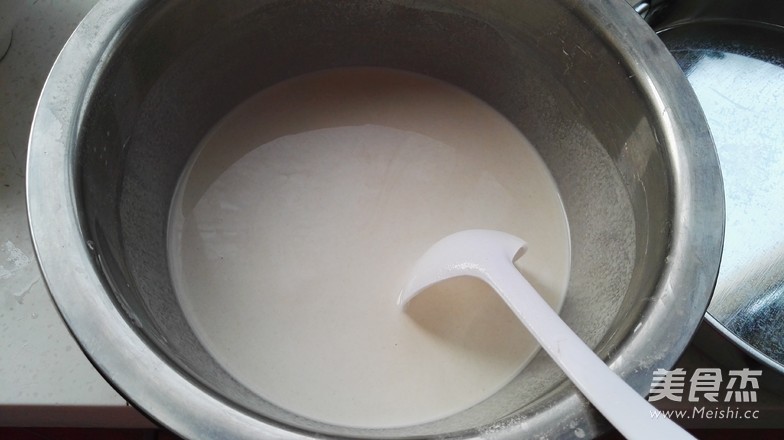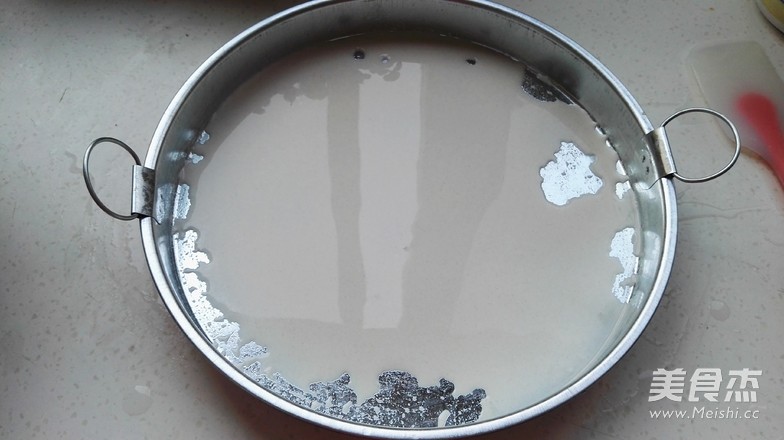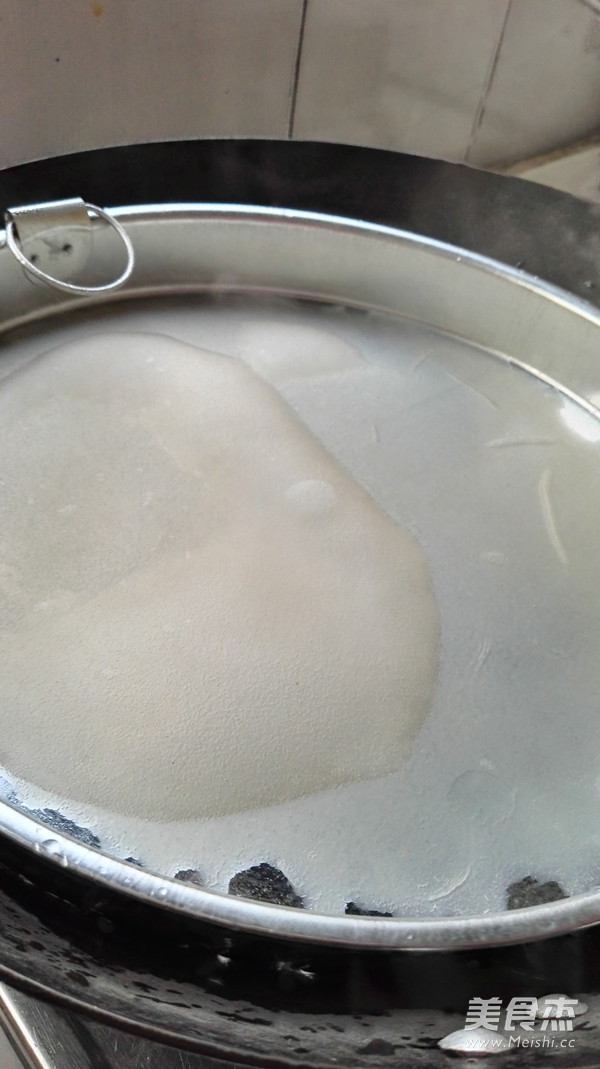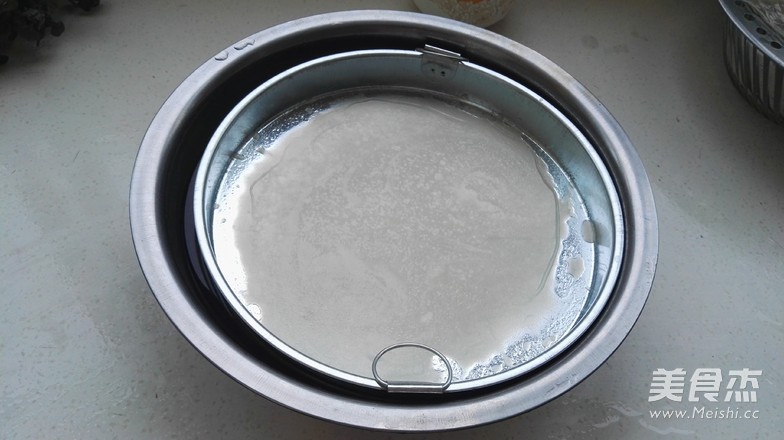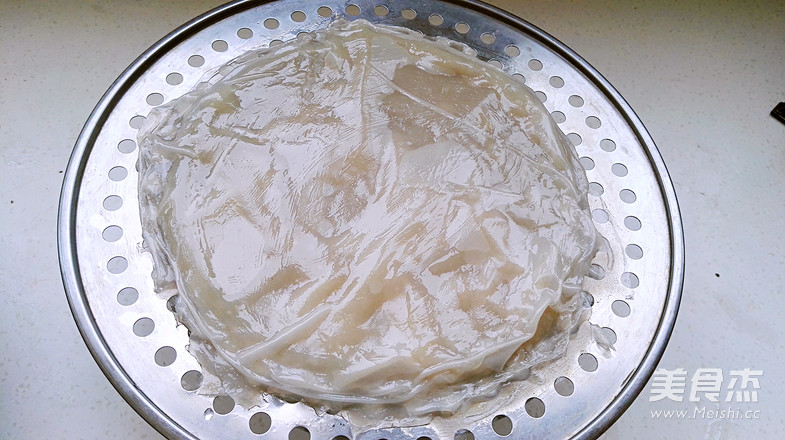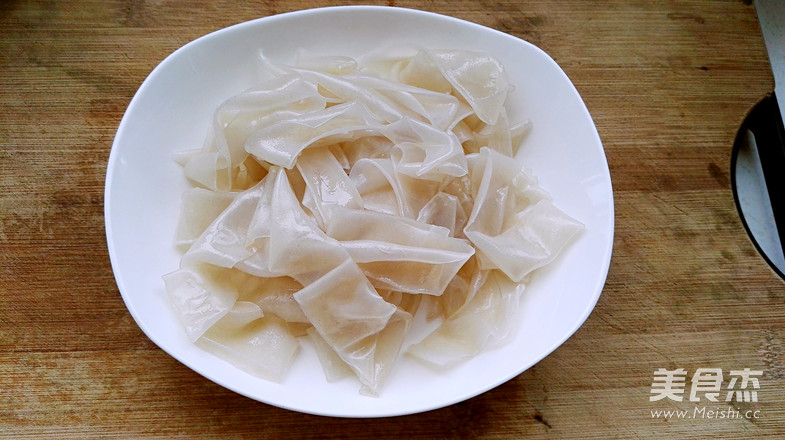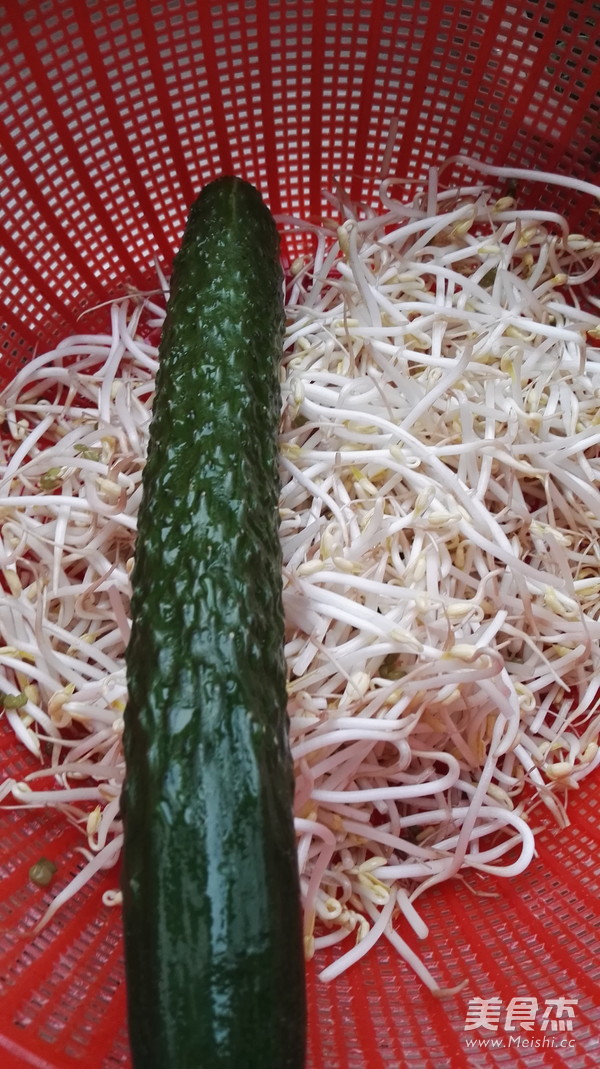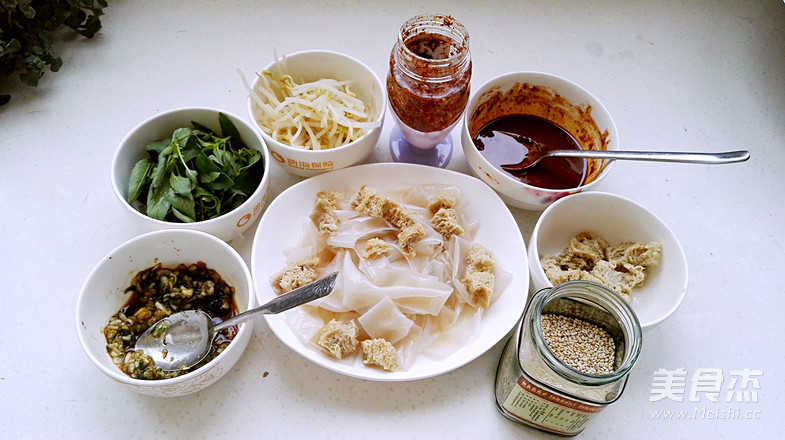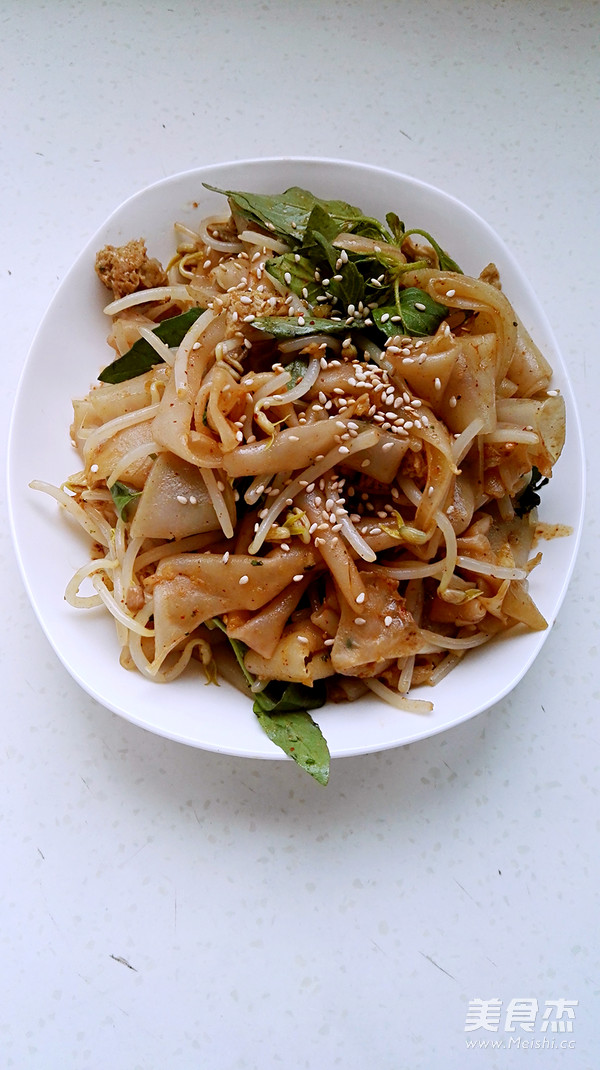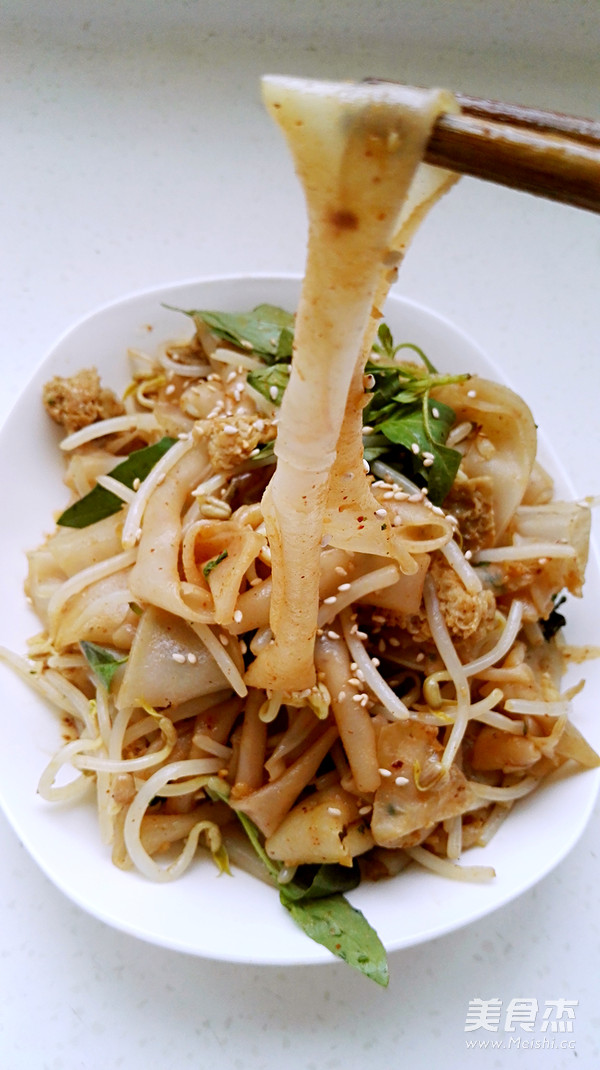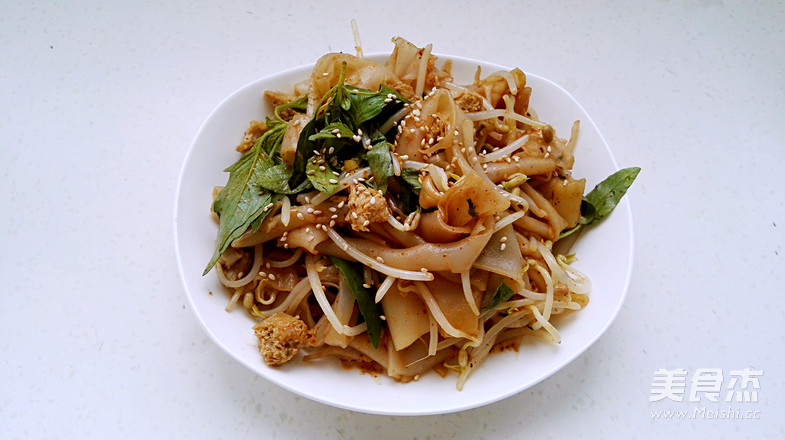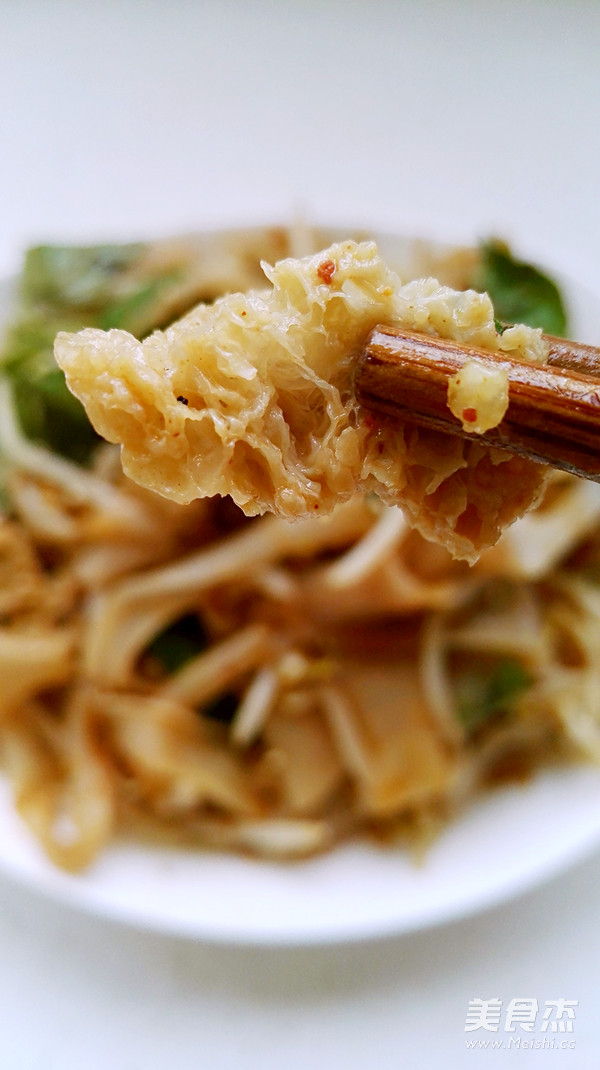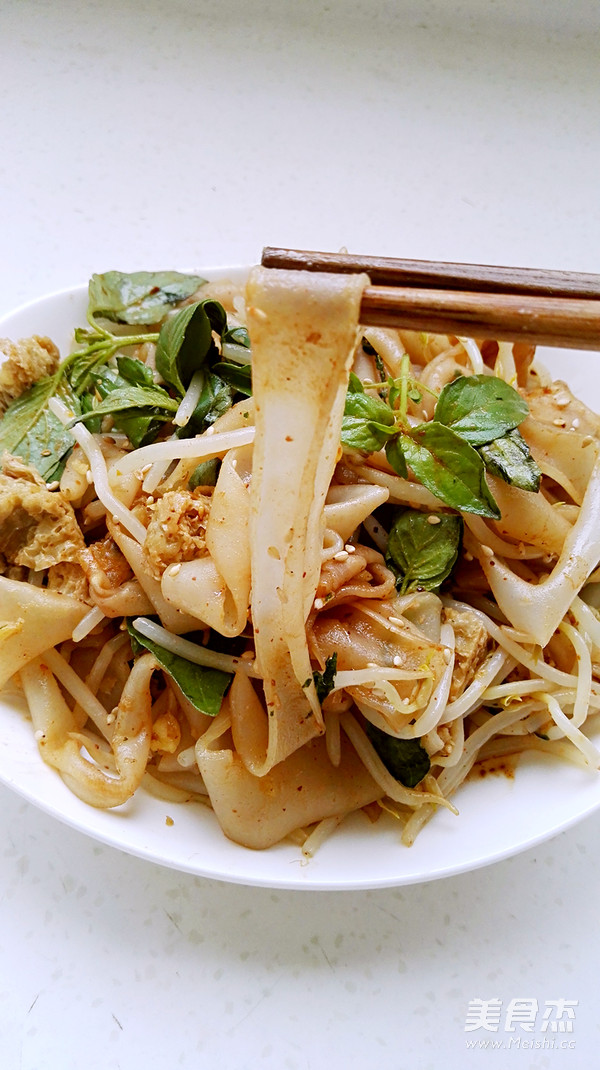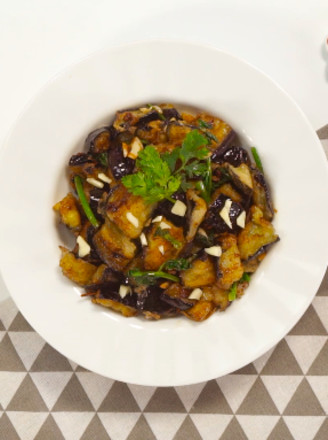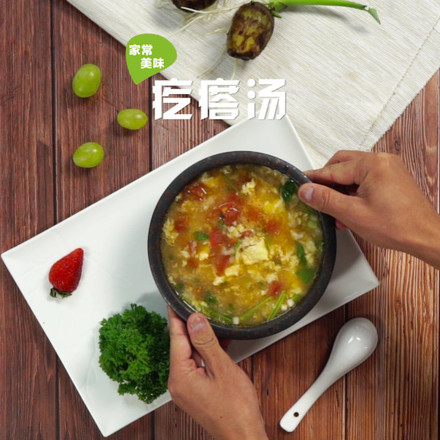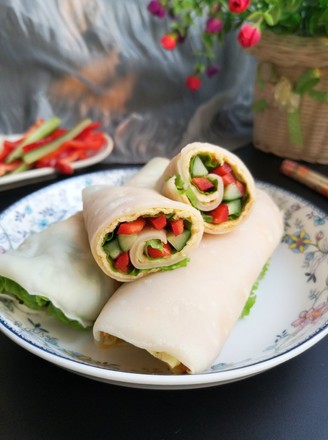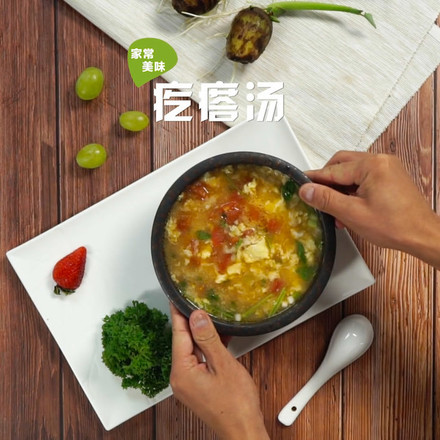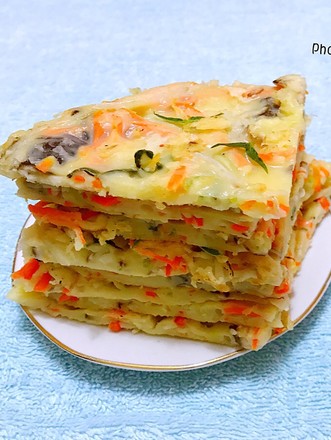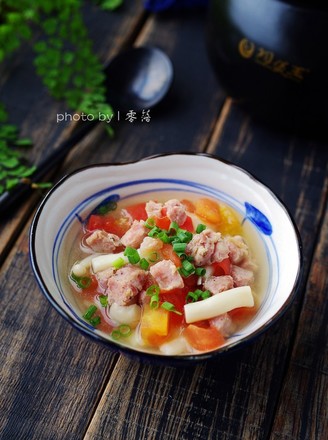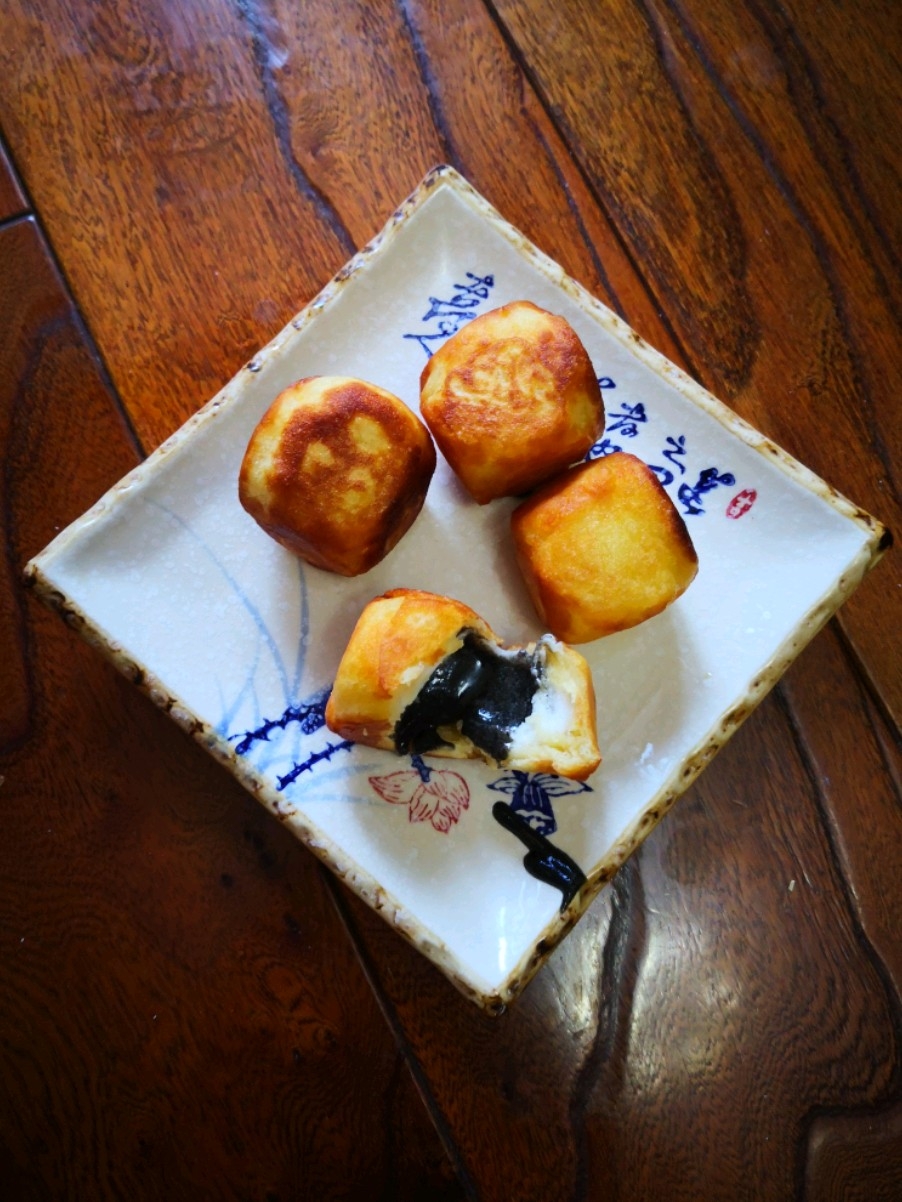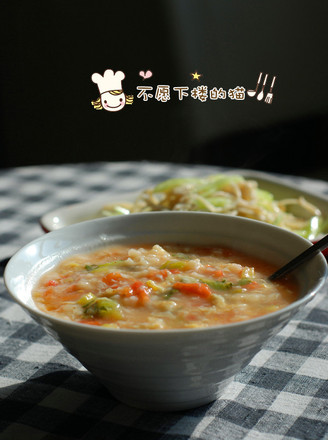Self-made Liangpi of Variety Pasta
1.
Mix 300g flour and 2g salt in a bowl. While pouring the water, use chopsticks to stir the flour into a dough. Use your hands to make a smooth dough. Cover and let it rest for 20 minutes.
2.
Knead smoothly, and pour water in a basin (you don't need to cover the noodles, just lower than the noodles).
3.
Knead and pinch as usual when washing clothes, and knead out the batter water (the water has turned into a white thick paste).
4.
Pour the batter water into another bowl, put the filtered noodles in the dough bowl and continue to add water and knead.
5.
The same rub and wash a second time.
6.
The batter water is still filtered into another basin.
7.
After washing for the third time, the dough is still very loose and the batter is very thick. Continue to change the water, scrub and filter.
8.
The fourth time, the same washing and filtering.
9.
The fifth time, the water was completely cleared and the gluten was washed. The washed gluten can be steamed (it will be cooked in 15 minutes after the water is boiled, and it will be steamed when the water is boiled) or boiled (cooked in ten minutes), eaten with cold skin or cold sauce, or stir fry.
10.
Collect all the dough water and put it in the refrigerator for more than four hours (it is easy to deteriorate outside when it is hot, and it doesn’t matter where it is left in cold weather).
11.
After being refrigerated and standing still, all the starch settled down. Take it out slowly without shaking.
12.
Pour out the clear water slowly until the turbid surface slurry also flows out.
13.
Stir the rest with a spoon.
14.
Use a brush to brush a layer of sesame oil (or other cooked oil to prevent sticking), pour the slurry, and shake it gently (you can control the thickness by making a few sheets, feel free).
15.
Bring the water in the pot to a boil, put the plate in the water pot, cover and steam for two or three minutes (at this time, you can also scoop the other roll into the batter. After the first one is taken out, you can put it directly in. Rolls and Luo take turns to save time).
16.
It will be cooked as soon as it becomes transparent, so take it out. (I picked Lo Luo earrings with two chopsticks, pay attention to prevent scalding).
17.
Take out the cold water basin and let it cool, just remove it without burning your hands.
18.
Prepared Liangpi.
19.
Put the steamed cold skin on the steaming rack, stack the sesame oil (or other cooked vegetable oil) one by one to prevent it from sticking together, and steam all the cold skin in turn.
20.
Cut cold skin into strips and serve on a plate.
21.
Shred cucumber and blanch mung bean sprouts.
22.
Make a puree with garlic, Agastache, ten coriander, and salt, add vinegar, soy sauce, sesame oil, peanut sesame paste, and chili oil to make a sauce. Cut cold skin into strips, cut cooked gluten into pieces, shredded cucumber, mung bean sprouts, nepeta, cooked sesame seeds, etc.
23.
Make a puree with garlic, Agastache, ten coriander, and salt, add vinegar, light soy sauce, sesame oil, peanut sesame paste, and chili oil to make a sauce. Cut cold skin into strips, cut cooked gluten into pieces, shredded cucumber, mung bean sprouts, and nepeta, all in a large pot, pour the juice, sprinkle with cooked sesame seeds, mix well and start eating.
24.
Finished product.
25.
Finished product.
26.
Finished product.
27.
Washing the noodles is not in vain, you can eat gluten-free!
28.
Finished product.
Tips:
1. The dough can be soft or hard, and it will be smooth after wake up. Add water to knead, grasp, pinch, etc., filter the water with a strainer and pour it into another basin. Repeat this step several times until the gluten becomes a mass and the water is clear. 2. It is best to put the washed batter in water overnight. 3. Stainless steel basins, pans, pizza pans and all flat-bottomed containers can also be used without cold piroro. 4. Refrigerate and stand in hot weather to prevent deterioration. 5. Brush oil on Liangpi to prevent adhesion and cracking. 6. The juice can be adjusted flexibly according to your taste.

